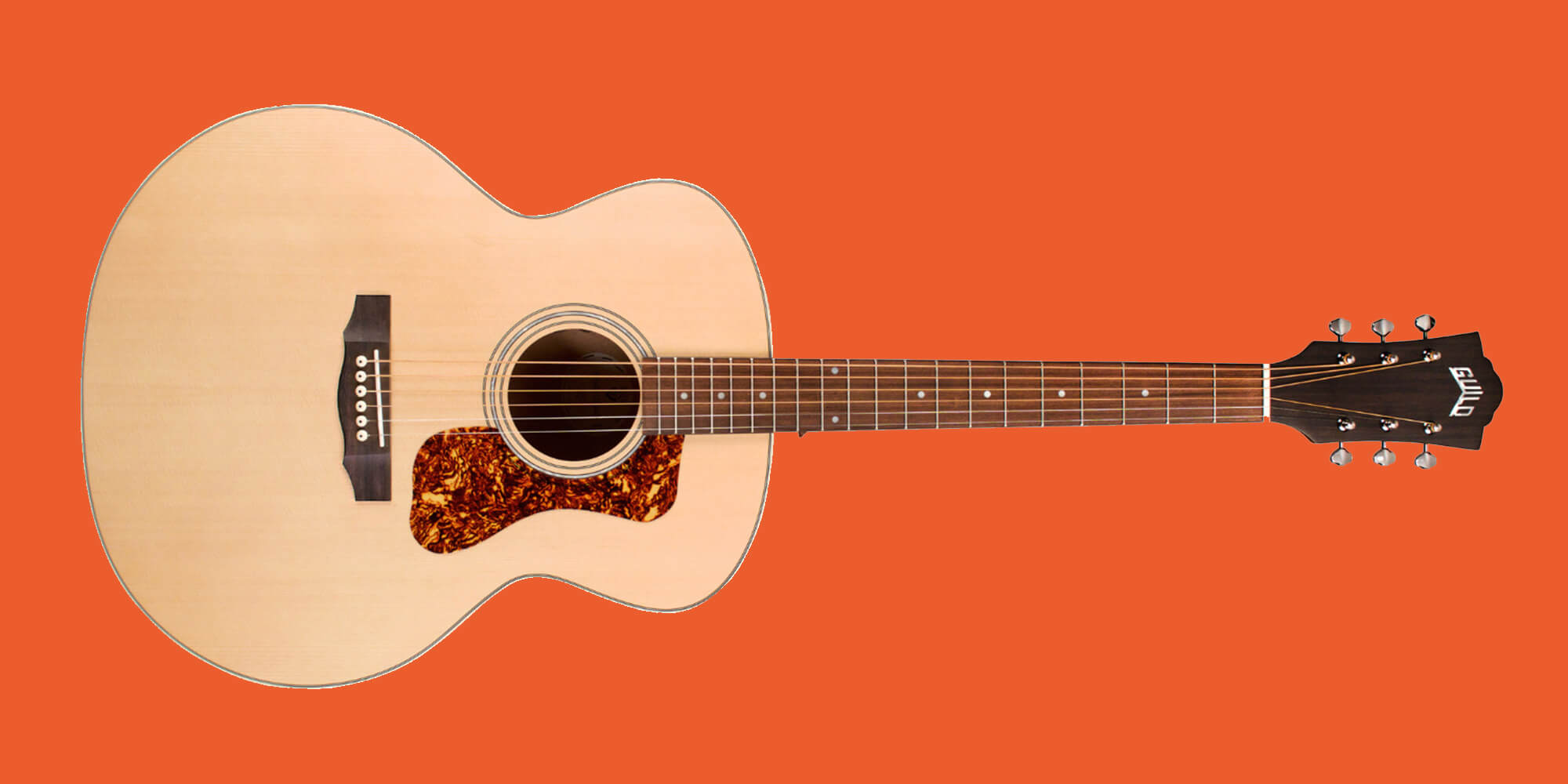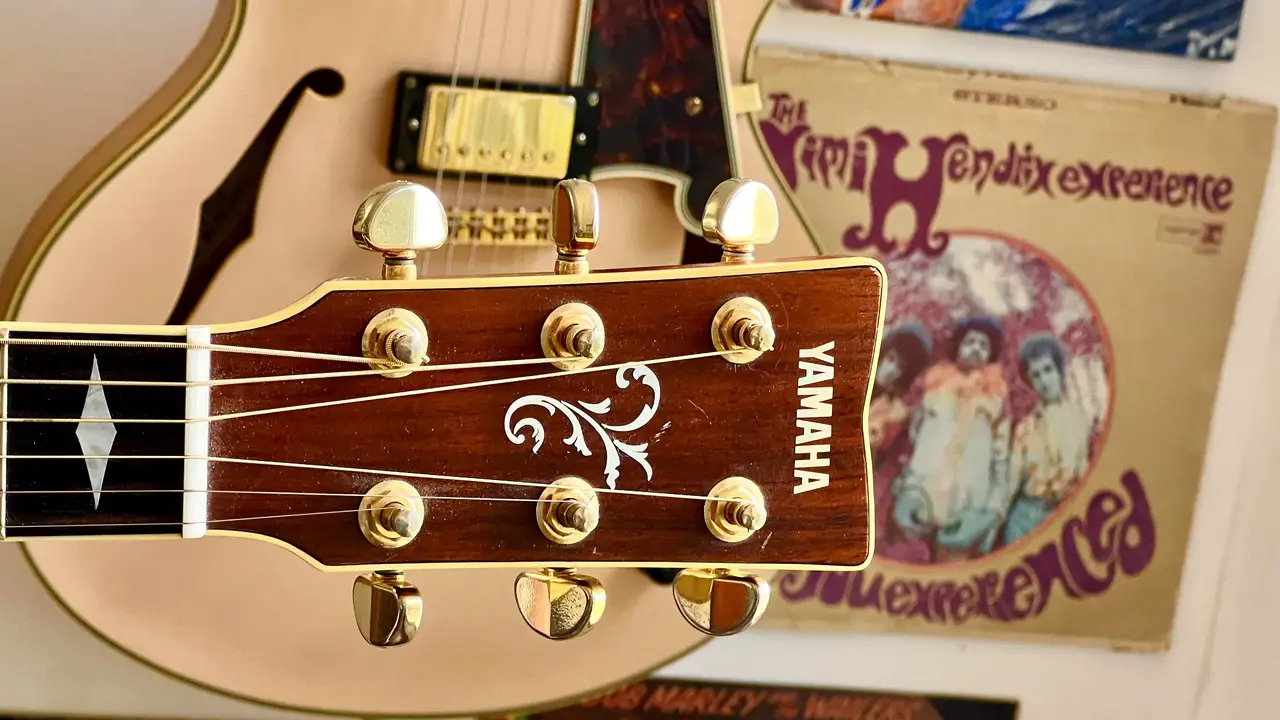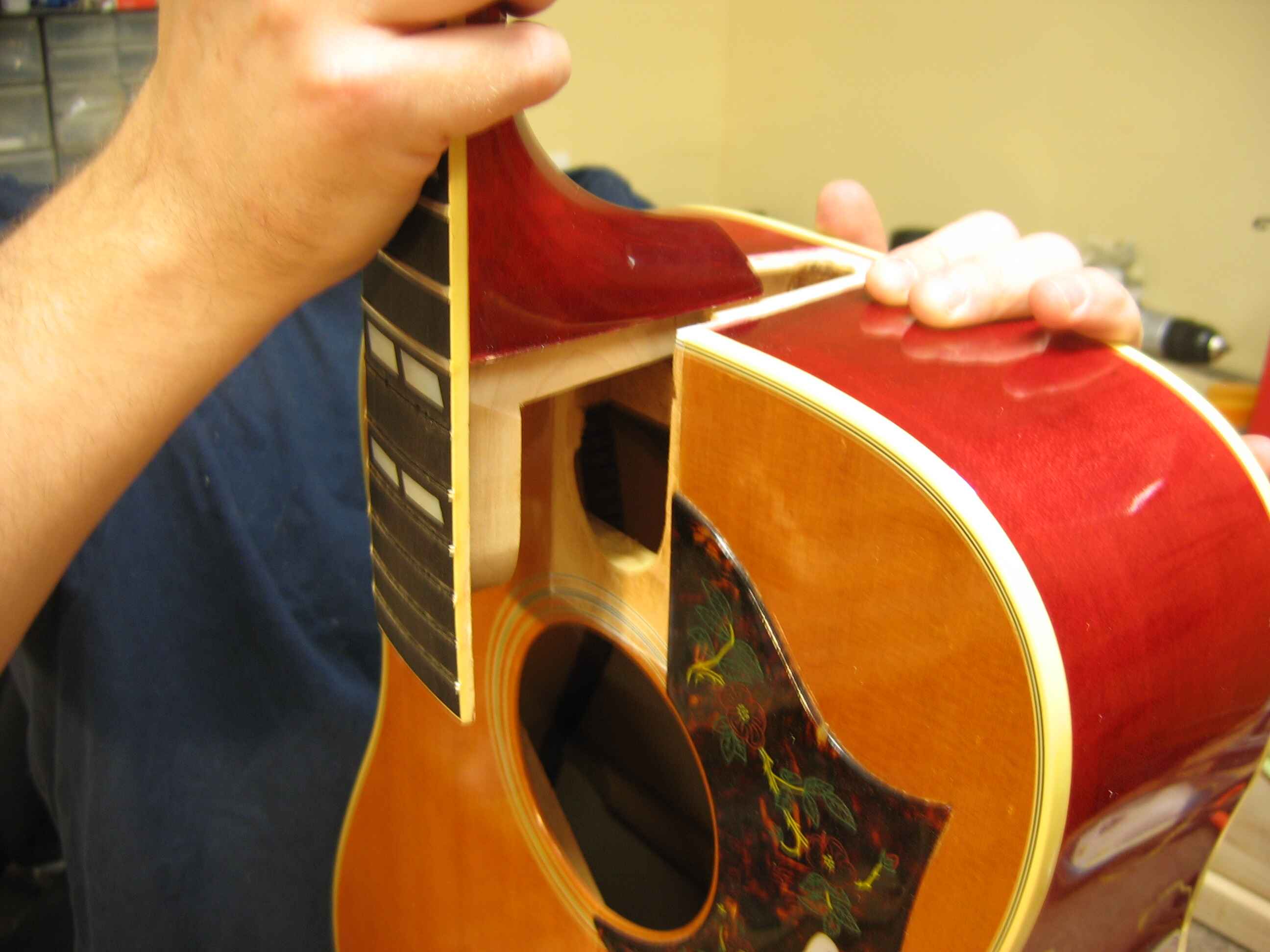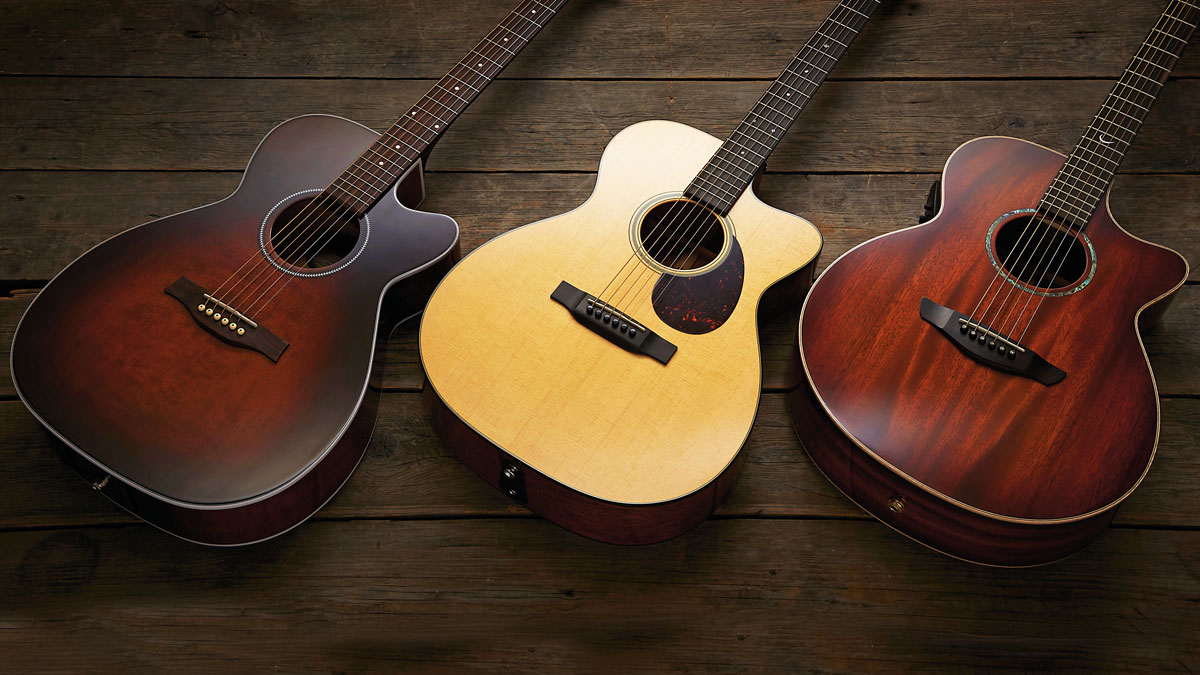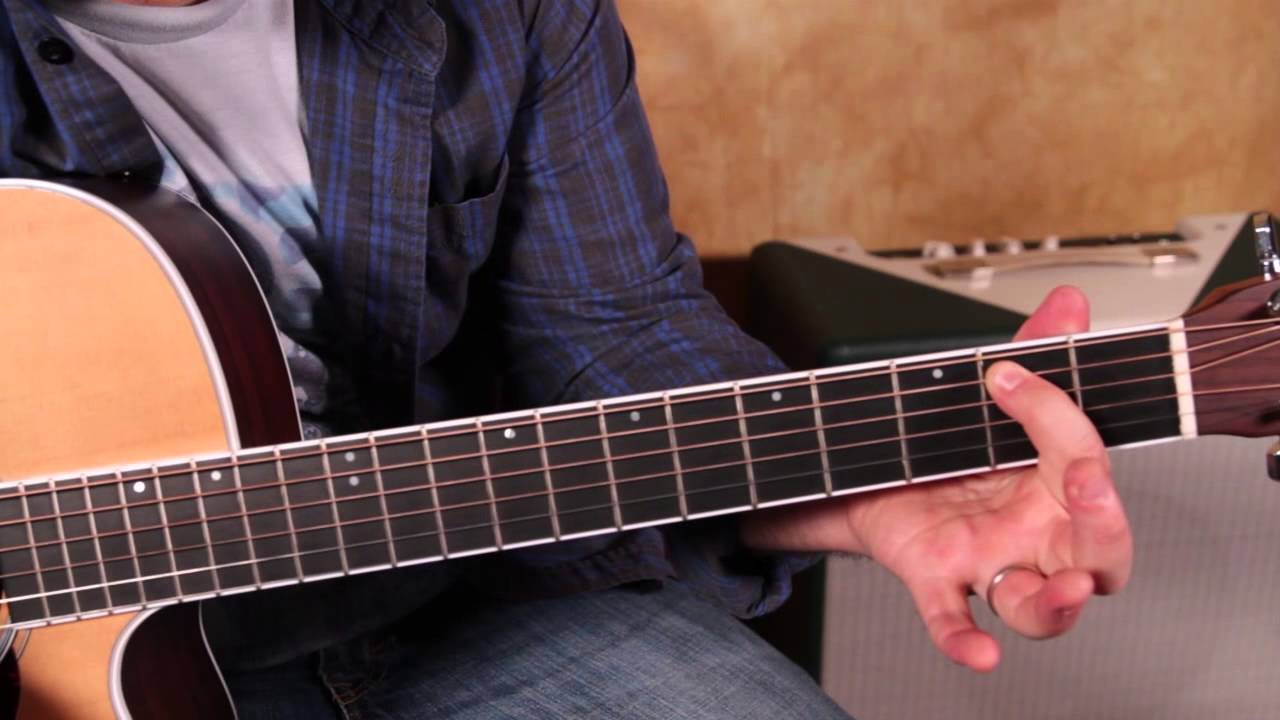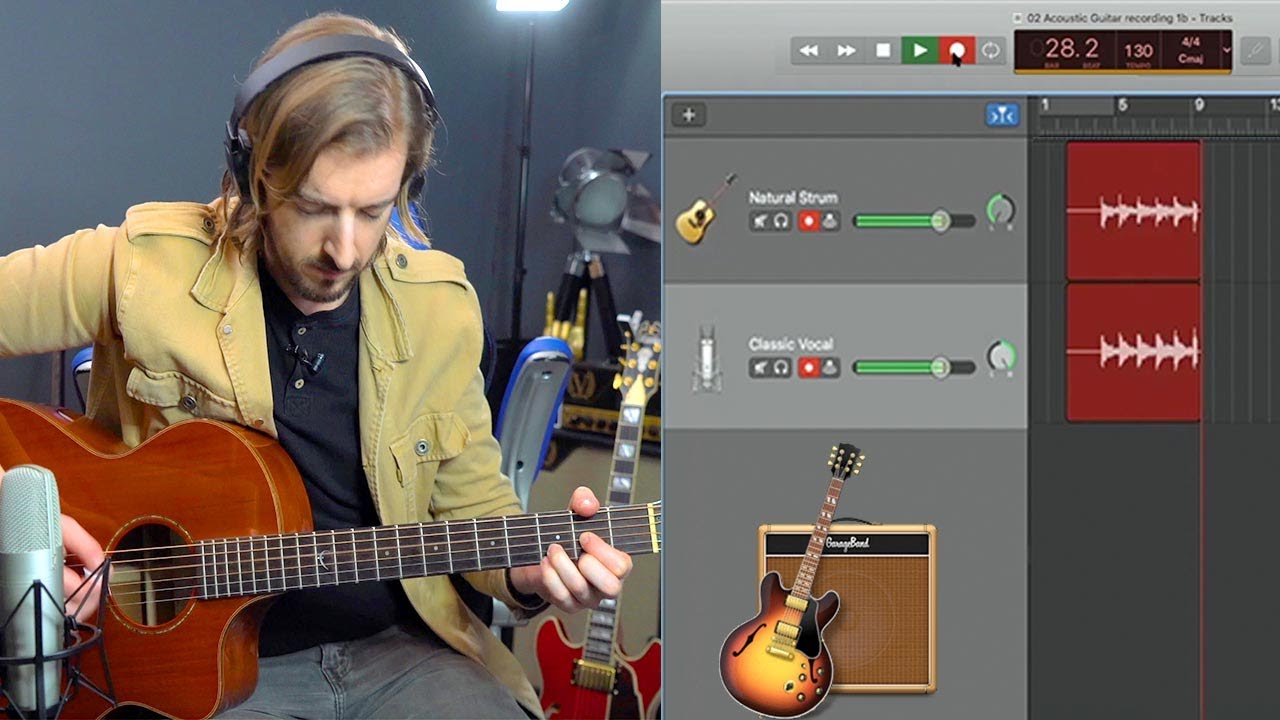Introduction
Welcome to the world of acoustic guitar! Whether you’re a complete beginner or have some experience with other instruments, learning to play the acoustic guitar can be a fulfilling and enjoyable journey. The warm and rich tones of an acoustic guitar have captivated musicians and audiences alike for generations, making it a popular choice for both casual players and professional musicians.
While becoming proficient at playing the acoustic guitar requires dedication and practice, it is a skill that can be acquired by anyone with a passion for music. Whether you dream of strumming along to your favorite songs, writing your own music, or performing for others, this guide will provide you with the essential steps to get good at playing the acoustic guitar.
Throughout this article, we will cover various aspects of acoustic guitar playing, including choosing the right instrument, developing proper hand placement and technique, learning chords, mastering strumming patterns, and much more. By following these steps, you will gradually build a solid foundation, allowing you to progress as a guitarist and unlock your musical potential.
Remember, learning to play the acoustic guitar is not a race or a competition; it’s a journey. Take your time, enjoy the process, and celebrate your accomplishments along the way. So, without further ado, let’s dive into the world of acoustic guitar and get started on this exciting musical adventure!
Choosing the Right Acoustic Guitar
When embarking on your journey to become a skilled acoustic guitarist, one of the most crucial decisions you’ll make is choosing the right instrument. With so many options available, it’s essential to select a guitar that suits your playing style, budget, and preferences.
Consider your playing style and genre. Acoustic guitars come in various shapes and sizes, each offering a unique tone and playability. If you plan to strum chords and play primarily in a singer-songwriter style, a dreadnought or concert-sized guitar with a fuller sound may be ideal. On the other hand, if you’re interested in fingerpicking or playing intricate melodies, a smaller bodied guitar like a parlor or grand concert may provide better resonance and response.
Set a budget. Acoustic guitars can range from affordable entry-level models to high-end professional instruments. Determine your budget range and look for guitars within that price range. While it’s tempting to opt for the cheapest option, investing in a quality instrument will ensure better sound, durability, and long-term satisfaction.
Visit music stores and try out different guitars. Don’t hesitate to visit local music stores to try out different guitars. Feel how the guitar sits in your lap and the comfort of the neck and fretboard. Strum the strings and listen to the resonance and tone. Pay attention to the overall feel and comfort as it will greatly impact your playing experience.
Consider the construction and materials. Acoustic guitars are typically made from various woods, such as spruce, cedar, mahogany, or rosewood. Different wood combinations produce distinctive tonal characteristics. Additionally, pay attention to the guitar’s build quality, including the bracing, binding, and finish. A well-constructed guitar will enhance sound projection and maintain stability over time.
Ultimately, choosing the right acoustic guitar is a personal decision that depends on your preferences, budget, and playing style. Take your time, do your research, and test out different options before making a purchase. Remember, finding the guitar that resonates with you and inspires you to play is the key to enjoying your musical journey.
Getting Familiar with the Instrument
Once you’ve chosen your acoustic guitar, it’s time to get acquainted with its different parts and functionalities. Becoming familiar with the instrument will help you navigate your way around it and understand how each component contributes to the overall sound and playability.
Start by learning the basic anatomy of the guitar. The main components include the body, neck, headstock, fretboard, and strings. Understand the purpose of each part and how they work together to produce sound. This knowledge will assist you in future lessons and discussions about playing techniques and guitar maintenance.
Next, familiarize yourself with the tuning pegs, also known as machine heads or tuners. These small mechanisms are used to adjust the tension of the strings, thereby bringing them to the correct pitch. Learn how to tune your guitar using an electronic tuner, smartphone app, or by ear. Regular tuning is crucial for producing proper notes and keeping your playing in tune with other instruments.
Explore different playing techniques and techniques that are specific to the acoustic guitar. Experiment with strumming the strings using a pick or your fingers, and practice alternate picking, palm muting, and dynamics. This will enable you to produce a variety of tones and dynamics in your playing. Additionally, become comfortable with fingerpicking techniques, which involve plucking the strings individually with your fingers to create intricate melodies and harmonies.
Take the time to learn about the different types of strings and their characteristics. Acoustic guitars typically use steel or bronze strings, with variations in gauge and coating. Experiment with different string brands and materials to find the ones that suit your playing style and tonal preferences. Be aware that changing strings regularly is essential for maintaining a consistent sound and playability.
Lastly, explore the various sounds you can produce on the guitar. Experiment with different strumming patterns, chord progressions, and single-note melodies. Learn to identify major, minor, and other common chord types, and practice transitioning between them smoothly. As you get more comfortable with the instrument, you can start exploring advanced techniques like hammer-ons, pull-offs, and slides.
Remember, getting familiar with the instrument is an ongoing process. Dedicate time each day to practice and explore different aspects of your acoustic guitar. By developing a strong foundation of knowledge and technique, you’ll be well-prepared for the exciting journey ahead!
Proper Hand Placement and Technique
When it comes to playing the acoustic guitar, proper hand placement and technique are essential for producing clean and accurate sounds. Focusing on developing good habits from the beginning will greatly enhance your playing and prevent unnecessary strain or injury.
Start by positioning your fretting hand correctly. Place your thumb on the back of the guitar neck, resting against the middle of your index finger. This allows for a stable grip and facilitates efficient finger movement across the fretboard. Keep your fingers arched and use the tips to press down on the strings, ensuring that they don’t touch adjacent strings and create unwanted buzz.
For your strumming hand, experiment with different positions to find what feels most natural for you. Many players find it comfortable to anchor the pinky or the side of the hand on the guitar’s top or pickguard for stability. Hold the pick between your thumb and index finger and practice strumming downwards across the strings with a relaxed wrist motion. As you progress, incorporate upstrokes and different strumming patterns to diversify your playing.
In addition to hand placement, pay attention to your posture. Sit or stand with a straight back and relaxed shoulders, allowing for unrestricted movement and minimizing tension. Position the guitar so that it rests comfortably against your body, with the top part of the guitar angled slightly upward for optimal sound projection.
Developing finger strength and dexterity is crucial for smooth and accurate playing. Practice exercises and warm-up routines that target individual fingers and promote finger independence. Scales, arpeggios, and chromatic exercises are excellent for building strength and coordination. Start slow and gradually increase the tempo as your fingers become more agile.
As you progress, focus on refining your technique. Pay attention to the clarity and evenness of your notes, striving for clean and consistent sound production. Experiment with different playing dynamics, using light and heavy strokes to create contrast and expressiveness.
Remember, proper hand placement and technique require patience and practice. Take the time to develop these fundamentals, as they will serve as the building blocks for more advanced techniques and playing styles. Embrace a mindful and disciplined approach, and your acoustic guitar playing will flourish.
Learning Basic Chords
Learning basic chords is an essential step in becoming proficient at playing the acoustic guitar. Chords are the foundation of most songs and provide the harmony and structure that support the melody. By mastering a repertoire of basic chords, you’ll be able to play countless songs in various genres.
Start by learning open chords, which are played in the first few frets of the guitar. Begin with common chords like C, G, D, A, E, and F. Focus on positioning your fingers accurately and pressing down on the strings with the right amount of pressure to produce clear notes. Use your fingertips, ensuring that they come in contact with the strings and not touching adjacent strings.
Practice transitioning between chords smoothly. Start by strumming a simple downstroke on one chord and then switch to another chord. Initially, take your time to position your fingers correctly and ensure that each note rings out clearly. As you become more comfortable, aim for fluid chord changes without any hesitations.
As you progress, venture into barre chords. These chords involve using your index finger to bar all the strings across a specific fret while forming a chord shape with your other fingers. Barre chords allow you to play a wide range of chords using the same chord shapes, making them indispensable for more advanced playing. Begin with basic barre chord shapes like F major and B minor, and gradually expand your repertoire.
Utilize resources like chord charts, online tutorials, and instructional videos to learn new chords and chord progressions. Practice strumming different patterns and rhythms with each chord to develop a sense of groove and musicality. Experiment with adding embellishments like hammer-ons, pull-offs, or slides to spice up your chord progressions.
Learning basic chords is a continuous process, especially as you explore more advanced chord voicings and variations. Challenge yourself to learn new chords regularly and incorporate them into your practice routine. Remember, consistent practice and patience are key to mastering chords and expanding your musical repertoire.
Additionally, practice playing along with songs that utilize the chords you’ve learned. This will help develop your ear for chord progressions and train you to switch between chords smoothly while maintaining the rhythm of the song.
By dedicating time to learning and practicing basic chords, you’ll lay a strong foundation for your acoustic guitar playing. Chords are the gateway to unlocking countless songs and will fuel your musical creativity as you progress on your journey.
Mastering Strumming Patterns
Mastering strumming patterns is a vital skill for any acoustic guitarist. Strumming provides the rhythmic backbone of a song, adding texture and dynamics to your playing. By developing a solid foundation in strumming patterns, you’ll be able to bring your chords to life and create engaging and compelling music.
Begin with the basic downstroke strumming pattern. Start by strumming downward across the strings, using your dominant hand to create a consistent and even sound. Focus on precision and ensuring that each strum hits all the intended strings. Once you’ve mastered the downstroke, incorporate upstrokes, strumming upwards across the strings, to add variety and a more complete strumming technique.
Experiment with different strumming patterns to create different rhythms and grooves. Try out patterns like down-up, down-down-up, or combinations of long and short strums. Use these patterns to complement the style and tempo of the song you’re playing. Remember to start slowly and gradually increase the speed as you build accuracy and fluency.
Developing a sense of timing and groove is crucial for effective strumming. Practice with a metronome or drum machine to improve your ability to stay in time. Focus on syncing your strumming hand with the beat and maintaining a consistent rhythm throughout the song. Start with slower tempos and gradually increase the speed as you become more comfortable.
Listen to songs across different genres and study the strumming patterns used by experienced guitarists. Use online resources like chord charts or guitar tutorials to learn the strumming patterns for specific songs you’re interested in. Pay attention to the dynamics, accents, and emphasis on certain beats to capture the essence of the song’s rhythm.
Don’t be afraid to incorporate variations and embellishments into your strumming patterns. Try adding pauses, muted strums, palm muting, or accents on specific beats to create a unique and dynamic strumming style. Experiment with different combinations and techniques to find your own sound and develop your musical identity.
Remember, mastering strumming patterns takes time and practice. Dedicate regular practice sessions to work on your strumming technique and explore different rhythms and patterns. As you become more confident, you’ll be able to apply your strumming skills to a wider range of songs and musical styles.
Developing solid strumming patterns will elevate your acoustic guitar playing and make your performances more engaging. Focus on precision, timing, and experimentation to become a versatile and expressive strummer.
Practicing Fingerpicking
Fingerpicking is a popular technique for acoustic guitarists that allows for intricate melodies, beautiful harmonies, and rhythmic variations. By practicing fingerpicking, you’ll greatly expand your playing capabilities and create a rich and dynamic sound.
Start by familiarizing yourself with the fingerpicking hand positions. Place your thumb on the top three strings (E, A, and D), and assign each finger of your picking hand to a specific string: index finger for the G string, middle finger for the B string, and ring finger for the high E string. This is known as the classical fingerpicking hand position.
Begin with simple fingerpicking patterns using open chords. Start by plucking the bass note (played with your thumb) followed by the remaining strings (plucked with your fingers) in a specific order. Gradually increase the complexity of the patterns as you become more comfortable, incorporating additional strings and variations.
Work on finger independence by practicing fingerpicking exercises that focus on each individual finger. Start with basic exercises that isolate your thumb, index finger, middle finger, and ring finger, allowing you to develop precision and dexterity in each digit. Combine these exercises with patterns that involve playing chords or melodies to further enhance your fingerpicking technique.
Challenge yourself with fingerpicking arrangements of songs you love. Look for fingerstyle arrangements of popular songs or create your own by adapting the chords and melody into a fingerpicking pattern. This will allow you to apply your fingerpicking skills in a musical context and develop your own interpretations of songs.
Experiment with different fingerpicking styles and techniques. Explore classical fingerpicking, where each thumb and finger plays a specific string, or try Travis picking, which involves alternating bass notes and melodies. Discover new patterns, variations, and techniques as you delve into folk, blues, or country fingerpicking.
Develop a strong sense of rhythm and timing in your fingerpicking. Utilize a metronome or drum machine to practice playing in time and maintaining a consistent beat. Focus on synchronization between your picking hand and fretting hand to create a seamless and polished sound.
Remember, learning fingerpicking takes patience and dedication. Take the time to practice regularly and start slow, gradually increasing the speed as you build confidence and accuracy. As you progress, incorporate more challenging fingerpicking patterns and expand your repertoire of songs.
Fingerpicking allows for endless possibilities and creativity on the acoustic guitar. With consistent practice and a commitment to honing your fingerpicking technique, you’ll be able to captivate listeners with the intricate melodies and harmonies you create.
Understanding Music Theory
Understanding music theory is a valuable asset for any musician, including acoustic guitarists. While it may initially seem daunting, grasping the basics of music theory will greatly enhance your playing and provide you with a deeper understanding of how music works. It will empower you to communicate with other musicians, improvise, and compose your own music.
Start by learning the fundamentals, such as the musical alphabet, notes on the guitar fretboard, and the different types of scales and chords. Familiarize yourself with the major and minor scales, as these are the foundation for many melodies and harmonies. Practice playing these scales in different positions on the guitar to increase your fretboard knowledge and develop your ear.
Study the concept of intervals, which are the distances between two notes. Understanding intervals will help you recognize patterns, create melodies, and build chords. Learn about intervals such as major and minor thirds, perfect fifths, and octaves. Recognizing these intervals will enable you to construct chord progressions and play melodies by ear.
Expand your knowledge of chords by studying chord construction. This involves understanding how chords are constructed using a combination of notes from scales. Learn the formulas for major, minor, and dominant chords, as well as extensions and alterations. Experiment with chord voicings and inversions to create unique sounds and add richness to your playing.
Explore music notation and sight reading. While not essential for every acoustic guitarist, learning to read sheet music can be beneficial in understanding complex compositions and broadening your musical vocabulary. Start by learning how to read basic rhythms and gradually progress to reading melodies and more advanced musical notation.
Gain an understanding of song structure and the different sections that make up a song, such as verses, choruses, bridges, and pre-choruses. Recognizing these sections will help you follow along with songs, write your own compositions, and collaborate with other musicians.
Listen actively to music across different genres and analyze the musical elements present. Pay attention to the melodies, harmonies, rhythms, and chord progressions. As you dissect and analyze songs, you’ll start recognizing recurring patterns and structures, which will deepen your understanding of music theory in practice.
Remember, learning music theory is a continuous process. Embrace a curiosity-driven mindset and explore new concepts and techniques as you progress on your musical journey. By acquiring a solid foundation in music theory, you’ll develop a deeper appreciation for music and open up a world of possibilities for your acoustic guitar playing.
Developing a Strong Rhythm Sense
Rhythm is the heartbeat of music, and developing a strong sense of rhythm is crucial for any acoustic guitarist. Having a solid rhythm foundation enhances your ability to play with others and ensures that your playing is precise, groovy, and engaging. Here are some tips to help you develop a strong rhythm sense:
Play with a metronome or drum machine. Practicing with a metronome helps you internalize the tempo and develop a steady sense of timing. Start with a slow tempo and gradually increase the speed as you become more comfortable. Focus on locking your playing to the metronome, ensuring that your notes fall precisely on the beat.
Tap your foot or use body movement. Engaging your body in rhythmic movement can help you feel the groove and stay in sync with the beat. Tap your foot or sway your body in time with the music to internalize the rhythm and maintain a consistent pulse.
Practice playing along with different styles and genres of music. Experiment with playing along to various genres such as blues, rock, folk, or jazz, as each style has its own rhythmic characteristics and nuances. By exposing yourself to different rhythms and patterns, you’ll expand your rhythmic vocabulary and adaptability.
Focus on subdivisions and syncopation. Subdivisions refer to dividing the beat into smaller rhythmic units. Practice playing simple exercises or strumming patterns using eighth notes, triplets, or sixteenth notes to develop your ability to navigate intricate rhythms. Additionally, experiment with syncopated rhythms, where accents are placed on weak beats or off-beats, adding a sense of groove and interest to your playing.
Play with other musicians. Collaborating with other musicians is an excellent way to improve your rhythm skills. Playing in a band or jamming with others allows you to not only follow their rhythmic cues but also contribute your own rhythmic ideas. It teaches you how to listen and respond to the collective rhythm of the group, improving your overall sense of musical timing.
Study rhythm exercises and patterns. There are various rhythm exercises and patterns designed to improve your rhythmic accuracy and precision. Practice clapping or tapping along with rhythmic patterns, or work on exercises that focus on subdivision, accents, and polyrhythms. These exercises will train your ears and strengthen your sense of rhythm.
Record and listen to yourself. Recording your practice sessions or performances allows you to assess your rhythm objectively. Listen for any inconsistencies or areas where you may be rushing or dragging. Analyzing your recordings helps you identify areas where you can improve and refine your rhythm.
Remember, developing a strong rhythm sense takes time and consistent practice. Dedicate regular practice sessions specifically to rhythm exercises and actively engage with rhythm in your playing. By honing your rhythmic skills, you’ll become a more confident and expressive acoustic guitarist.
Building a Repertoire of Songs
Building a repertoire of songs is an important aspect of becoming a skilled acoustic guitarist. Having a diverse collection of songs at your fingertips allows you to showcase your abilities, entertain others, and gain a deeper understanding of different playing styles and techniques. Here’s how you can start building your song repertoire:
Explore various genres. Excite your musical palate by exploring a wide range of genres such as folk, blues, rock, pop, country, jazz, or classical. Each genre offers its unique playing styles, chord progressions, and techniques. This exploration will not only expose you to different musical elements but also contribute to your musical growth.
Start with songs that match your current skill level. Look for beginner-friendly songs that utilize basic open chords and simple strumming patterns. Focus on songs that you enjoy and resonate with you. It’s important to have fun while building your repertoire, as it keeps you motivated and engaged.
Gradually challenge yourself with more complex songs. As you progress, tackle songs with barre chords, fingerpicking patterns, or intricate solos. These songs will push your technical abilities and expand your musical horizons. Dedicate time to practice and break down challenging parts into smaller sections to master them gradually.
Learn songs by ear. Train your ears by listening to songs and figuring out the chords, melodies, and rhythms. Start with simple songs and gradually work your way up to more complex tunes. This skill will not only enhance your playing but also improve your ability to internalize and interpret music.
Utilize online resources. Take advantage of the wealth of online resources available, such as chord charts, tabs, YouTube tutorials, and guitar lesson websites. These resources provide you with accurate chord progressions, strumming patterns, and even video demonstrations to assist your learning process.
Experiment with your own arrangements. Once you’ve learned a song, don’t hesitate to put your own spin on it. Experiment with different strumming patterns, chord inversions, or embellishments to make the song your own. This allows you to express your creativity and personal style.
Expand your repertoire with songs from different decades and cultures. Explore music from various eras and cultures to broaden your musical horizons. This experience will expose you to new chord progressions, melodies, and rhythms, allowing you to incorporate diverse musical elements into your playing.
Regularly revisit and practice songs from your repertoire. Revisiting previously learned songs helps reinforce your skills and further internalize the music. Additionally, it allows you to refine your interpretation and experiment with new techniques as you continue to grow as a guitarist.
Remember, building a repertoire takes time and dedication. Focus on quality over quantity, selecting songs that resonate with you and challenge your abilities. Building a well-rounded repertoire will not only make you a versatile acoustic guitarist but also provide you with a platform to express your musicality and connect with others through your playing.
Seeking Professional Instruction and Guidance
Seeking professional instruction and guidance is a valuable step in your journey to becoming a skilled acoustic guitarist. While self-learning and exploration are essential, a knowledgeable teacher can provide guidance, insights, and personalized instruction that will accelerate your progress and help you reach your goals. Here’s why seeking professional instruction is beneficial:
Receive personalized feedback and guidance. A qualified instructor can identify your strengths, weaknesses, and areas that need improvement. They will provide feedback tailored to your specific needs, helping you optimize your practice sessions and focus on the areas that will yield the most significant growth.
Learn proper technique and form. A seasoned teacher will ensure that you develop correct technique and hand placement from the beginning. They will guide you in avoiding common mistakes and bad habits that can hinder your progress or lead to injuries. Developing good habits early on will greatly benefit your playing in the long run.
Expand your musical knowledge and repertoire. Instructors have a wealth of knowledge and can introduce you to new music, genres, and techniques that you may not have discovered on your own. They will help you build a diverse repertoire tailored to your interests and challenge you with new songs and exercises to expand your musical horizons.
Get motivation and accountability. Having a dedicated teacher provides external motivation and accountability. Knowing that someone is invested in your progress can help you stay committed to regular practice and ensure that you’re consistently working toward your goals. Instructors also encourage and inspire you during challenging moments, helping you overcome obstacles and push your boundaries.
Receive guidance in music theory and ear training. Professional instructors can demystify music theory concepts and guide you through the fundamentals. They can help you understand the relationships between chords, scales, and melodies, improving your overall understanding of music. Additionally, they can assist you in developing your ear training skills, enabling you to accurately identify melodies, chord progressions, and intervals by ear.
Benefit from mentorship and experience. Seasoned instructors have likely been through the same journey you’re embarking on and have valuable insights to share. They can offer guidance on performance, song arrangement, stage presence, and other aspects of being a musician. Their experience can help you navigate challenges, make informed musical decisions, and foster your growth as an artist.
Collaborate with other students. Taking lessons from a professional instructor often opens doors to opportunities to collaborate with fellow students. Group classes or workshops can provide a supportive community where you can learn from and inspire one another. Collaborating with other musicians can further fuel your progress and enhance your overall musicianship.
Remember, finding the right instructor is crucial. Take time to research and seek recommendations to find someone who aligns with your musical interests and teaching style. With the guidance of a professional instructor, you’ll fast-track your progress on the acoustic guitar and gain the knowledge and skills needed to become a well-rounded musician.
Conclusion
Congratulations on taking the first steps toward becoming a skilled acoustic guitarist! Throughout this guide, we have explored important aspects of the journey, from choosing the right instrument to seeking professional instruction and building a repertoire of songs. By following these steps and incorporating them into your practice routine, you’ll steadily improve your playing and unlock your full potential as a musician.
Remember, learning the acoustic guitar is a process that requires dedication, patience, and consistent practice. Don’t be discouraged by challenges or setbacks along the way. Embrace the joy of making music and the satisfaction of progressing, and you’ll find that each step you take brings you closer to your goals.
Stay curious and continue to explore different genres, techniques, and styles of playing. Seek new songs to learn, experiment with various strumming patterns, and challenge yourself with fingerpicking exercises. As your skills develop, consider exploring music theory and expanding your understanding of rhythm, chords, and harmony.
Don’t forget the importance of enjoyment and self-expression in your acoustic guitar journey. Find joy in playing the songs you love and allow your personal musicality to shine through. Use your instrument as a tool to convey emotions, tell stories, and connect with others through the universal language of music.
Whether you aspire to perform on stage, write your own compositions, or simply play for your own enjoyment, remember that every step forward is a valuable achievement. Embrace the process of growth, stay inspired, and never stop challenging yourself.
So, pick up your acoustic guitar, let your fingers dance along the strings, and immerse yourself in the beautiful world of music. With determination, practice, and a hunger for learning, you will undoubtedly become the skilled acoustic guitarist you aspire to be. Have fun, keep playing, and let your music resonate with the world.









